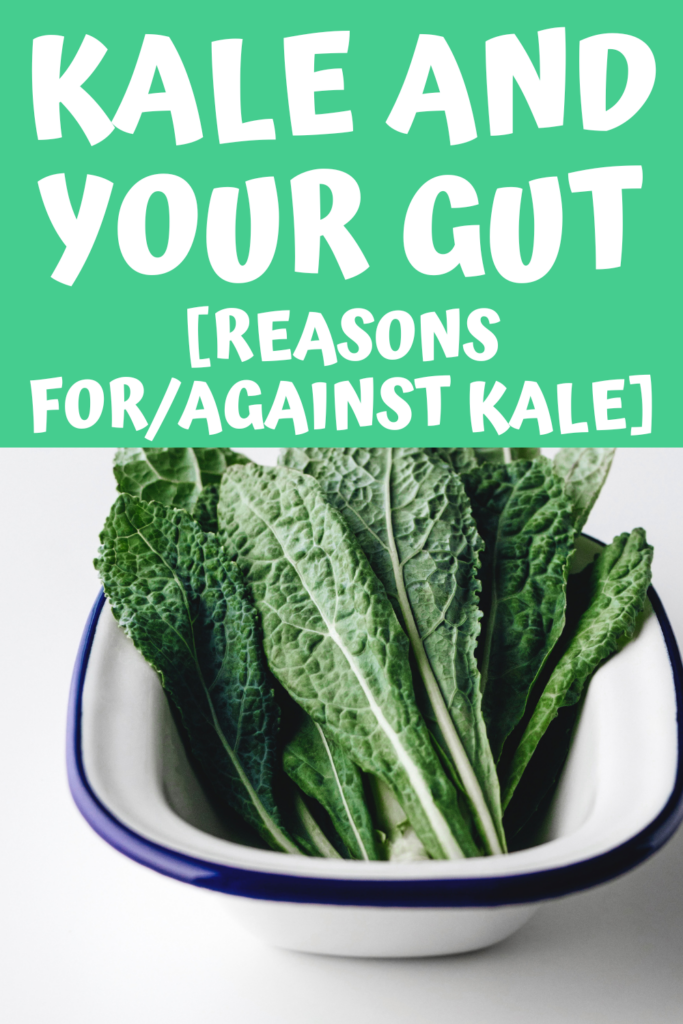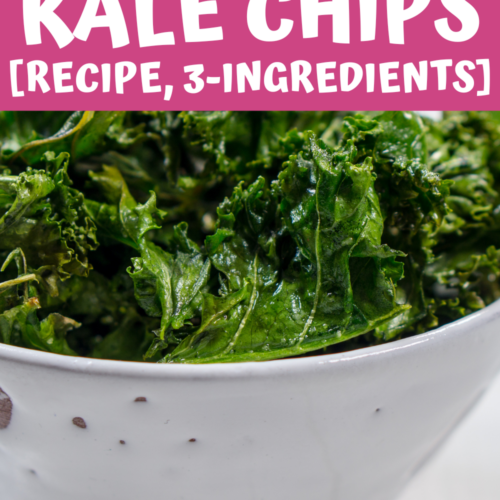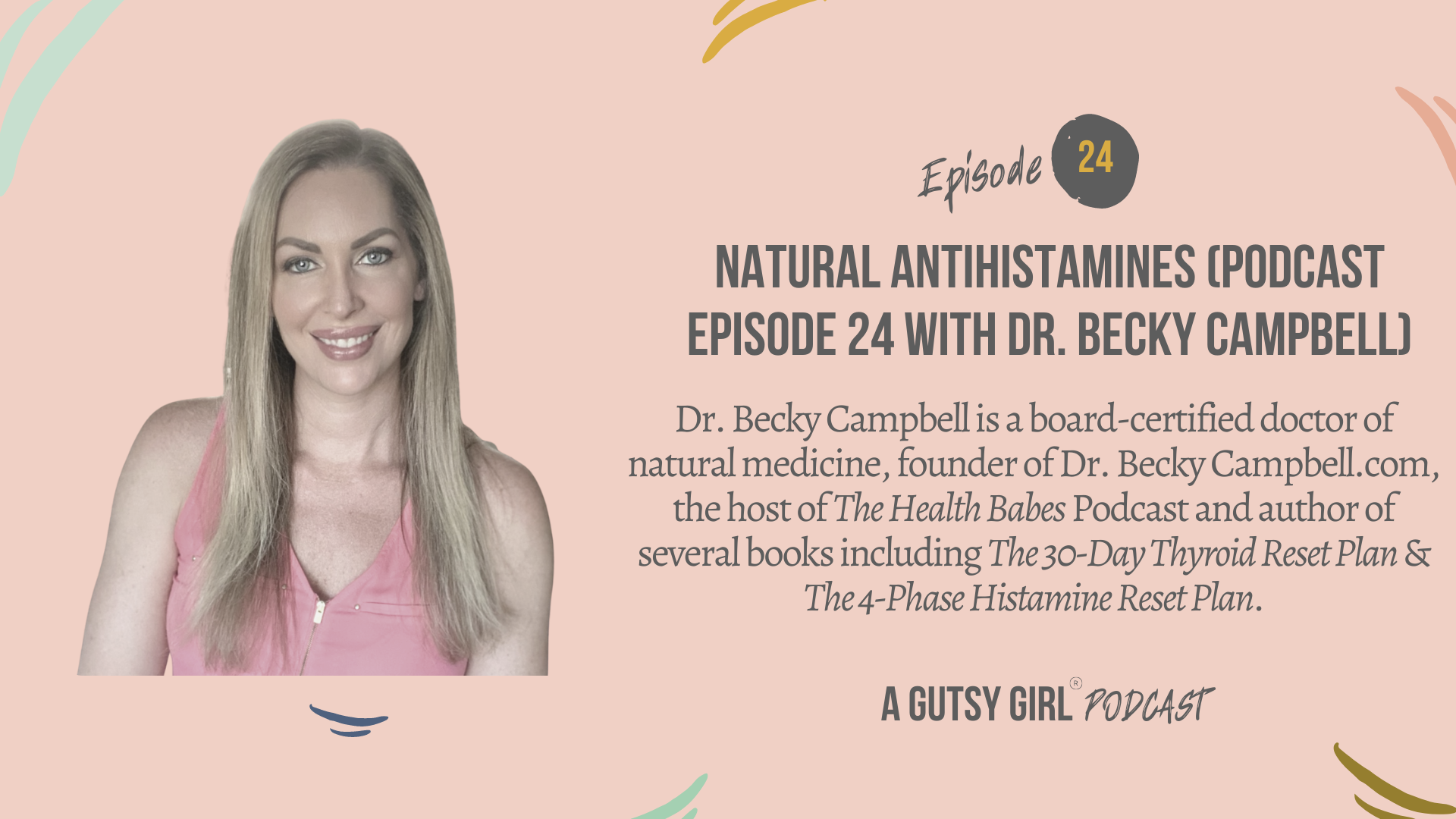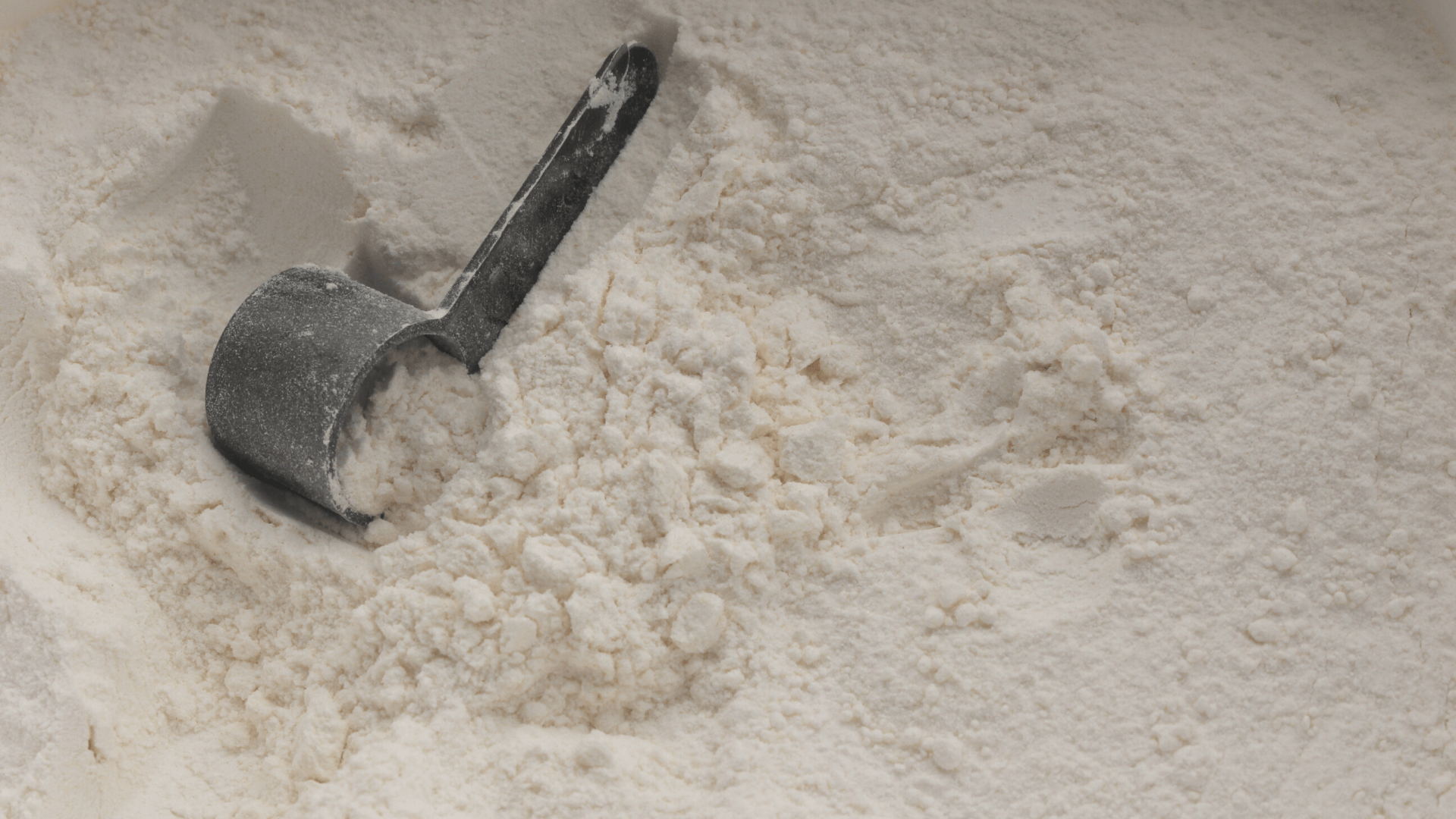I’m going to share with you my uber-simple Whole30 Kale Chips recipe today, but I also want to break down kale and your gut.
Why does everyone always talk about greens for your gut when many also say, “Kale is not all it’s cracked up to be?”
Let me help you understand more about the topic today.
Kale Me Crazy
Aka. What is kale? And why do I love it so much?
This leafy green continues to rank as one of the world’s healthiest foods. It belongs to the Brassica family that includes cruciferous vegetables such as cabbage, collards, broccoli, and Brussels sprouts.
Here are some nutritional stats for just 1 cup cooked:
- 98% Vitamin A
- 1,180% Vitamin K (hello miracle for the misfortunate bruisers like me!)
- 71% Vitamin C (and you thought only oranges would give you that vitamin!)
- And obviously….so many more things
More Kale Leaf Benefits
And here are some more kale benefits:
- Contains two types of antioxidants, namely, carotenoids and flavonoids.
- It only takes 100 calories of kale to provide over 350 milligrams for the most basic omega-3 fatty acid (alpha-linolenic acid, or ALA).
- Low-FODMAP. Yes, it’s true. Kale is low-FODMAP.
Okay, so kale is so wonderful. Then, what are the downsides to kale?
Kale and Your Gut
Click HERE to save this post for later.

Here are 3 reasons you might not choose kale right now on your gut-healing journey:
- Low Thyroid If your gut is not healed, there is a good chance that your thyroid function is also off. Kale contains glucosinolates, which impacts the thyroid and metabolism. Goitrogens, found in many vegetables, can be problematic for patients with thyroid disorders. Chris Kresser has a great article all about it HERE.
- Insoluble Fiber Remember, kale is an insoluble fiber. That means that, in addition to having many positive benefits, if you already have IBS-D and/or IBD-D, kale is not likely to help. Insoluble fibers speed up movement.
- Dirty Dozen Kale is part of the Dirty Dozen list, which means that it’s one of the crops that farmers use the most pesticides on. And why does that matter for your gut? Pesticides can induce gut microbiota dysbiosis and result in multiple potential adverse effects.
But let’s say you don’t have a low-functioning thyroid (namely, Hypothyroidism), you tolerate insoluble fiber, and you’re getting organic kale, then should you eat it?
Kale Recipes
Well, I don’t know? Only you can know that.
What I will say, though, is that I love kale and eat it whenever I can. You’ll find three recipes in my book, The Leaky Gut Meal Plan that use this incredible green leafy vegetable:
- Baked Kale Chips, page 130
- Boosted Green Smoothie, page 72
- Eggs and Greens Buddha Bowl, page 71
Here is the recipe for my Whole30 Kale Chips so you can make your own kale chips today.
Whole30 Kale Chips
Click HERE to save my Whole30 Kale Chips recipe for later.

The secret to crispy kale chips is that you must put the salt on them after they have baked.
Baking them with the salt on can leave the kale limp and wilted resulting in soggy kale chips.
Since most people like kale chips as a healthy snack for their crunchy snacks alternatives to things like potato chips, be sure you do not miss this part for making the best kale chips.
Kale is among the most nutrient-dense foods on the planet – one serving contains far more than 100 percent of the recommended daily values for vitamins A, K, and C.
All you need for this kale chip recipe is:
- 1 entire bunch fresh kale, tough stems removed and leaves torn into bite-size pieces
- 1 tablespoon olive oil
- sea salt
And the process for making homemade kale chips is just as easy:
- Preheat the oven to 350 degrees F.
- Place kale leaves on a rimmed baking sheet, and drizzle with the oil. Use your hands to gently massage the kale leaves with the oil. Once they are fully coated, spread leaves out in a single layer.
- Transfer the baking sheet to the oven, and bake until the leaves are crisp, for 15 to 20 minutes. Remove from the oven.
- THEN, season with your salt.
Some extra notes:
- You can dress up kale chips however you want. Some ideas for afterbaking might be to sprinkle them with things like:
- nutritional yeast – if you want a non-dairy cheesy flavor
- onion powder
- garlic powder
- lemon juice
- chili powder
- garlic salt (THIS Lemon Rosemary Sea Salt is our favorite!)
- coconut aminos
- hempseeds
- cayenne pepper
- Cooking times might vary, depending on your oven and also how big or small the kale leaves are. For crunchy kale chips, you’ll want to break the kale leaves into smaller pieces. And if you do this, it might be more like 10 – 15 minutes bake time.
- If you don’t want to use olive oil, you might also choose avocado oil or liquid coconut oil. I’ve used both, since 350 degrees is technically a lower temperature.
- For best results, eat the kale chips the day you make them. They can save overnight in an airtight container, left out on the counter at room temperature. But honestly, these oven-baked kale chips just won’t have the same great texture the next day. Simply just make small batches and you won’t have the leftover problem 🙂
Whole30 Kale Chips Recipe Card

Whole30 Kale Chips
Ingredients
- 1 bunch fresh kale tough stems removed and leaves torn into bite-size pieces
- 1 Tbps olive oil
- sea salt as desired
Instructions
- Preheat the oven to 350 degrees F.
- Place kale leaves on a rimmed baking sheet, and drizzle with the oil. Use your hands to gently massage the kale leaves with the oil. Once they are fully coated, spread leaves out in a single layer.
- Transfer the baking sheet to the oven, and bake until the leaves are crisp, for about 15 minutes. Remove from the oven.
- THEN, season with your salt.
Notes
- You can dress up kale chips however you want. Some ideas for afterbaking might be to sprinkle them with things like:
- nutritional yeast – if you want a non-dairy cheesy flavor
- onion powder
- garlic powder
- lemon juice
- chili powder
- garlic salt (THIS Lemon Rosemary Sea Salt is our favorite!)
- coconut aminos
- hempseeds
- cayenne pepper
- Cooking times might vary, depending on your oven and also how big or small the kale leaves are. For crunchy kale chips, you’ll want to break the kale leaves into smaller pieces. And if you do this, it might be more like 10 – 15 minutes bake time.
- If you don’t want to use olive oil, you might also choose avocado oil or liquid coconut oil. I’ve used both, since 350 degrees is technically a lower temperature.
- For best results, eat the kale chips the day you make them. They can save overnight in an airtight container, left out on the counter at room temperature. But honestly, these oven-baked kale chips just won’t have the same great texture the next day. Simply just make small batches and you won’t have the leftover problem
Kale Supplement
Want the health benefits of kale, but not interested in consuming the kale leave?
If you’re looking to simply boost a juice, smoothie, and/or smoothie bowl, check out the Perfect Fermented Kale HERE from Perfect Supplements.
If you use code AGUTSYGIRL at checkout, you’ll always save 10% on anything from Perfect Supplements.
One Serving of Perfect Kale Contains:
- 9 Calories
- 1654 IU Vitamin A
- 22mg of Vitamin C
- 25mg of Calcium
- 83mg of Potassium
- 0.32mg of Iron
- 6.32mg of Magnesium
- 46.14mcg Vitamin
- 31.29mcg Vitamin K2
- 20% Protein by Weight
- 12% Fiber by Weight
So what do you think? Do you eat kale? Like it? Love it? Leave it? Let me know.
If you liked this post, you might also enjoy:
- Sautéed Swiss Chard and Kale with Fig
- Top 22 Paleo Soup Recipes
- This Food is Good for You Unless It’s Not
Xox,
SKH
Disclosure: All opinions started here are 100% my own. I appreciate your support, as this compensation helps with expenses to keep this website up and running, and for me to continue sharing all that I can with you. Some of the links in this post are affiliate links. This means if you click on the link and purchase the item, I may receive a small commission at no extra cost to you. All opinions remain my own.
🤰 bloating be gone! weight loss through optimal gut health for women
💃ʜᴇᴀʟ ʏᴏᴜʀ ɢᴜᴛ. ʜᴇᴀʟ ʏᴏᴜʀ ʟɪfe.
🫶🏻 founder gutbyome.com






